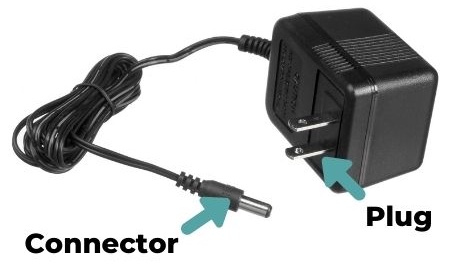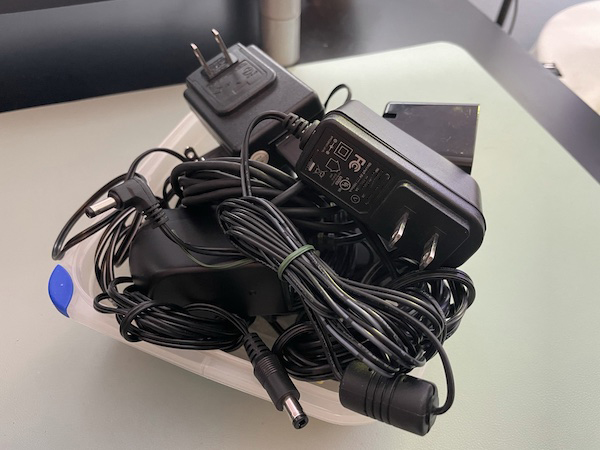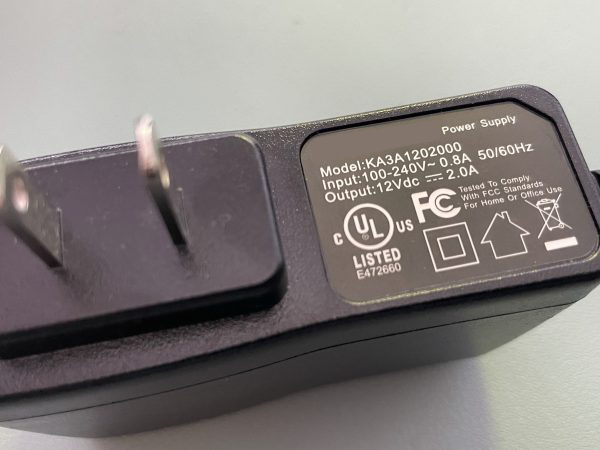If you’re like most people, you probably have a collection of old power adapters and chargers that you’ve held onto, even though the devices they used to power are long gone. You probably thought that someday, one of them might come in handy:
This article will help you figure out if an adapter is compatible with a given device.
Before we begin, let’s make sure we’re using the same words to refer to the different “plugs” on an adapter or charger…

With that out of the way, let’s begin!

Although you could do steps 1 and 2 in either order, I prefer to get the “device killer” question out of the way first. That question is: Does the connector’s polarity match the device’s polarity? Simply put, you want to find out which part of the connector is positive and which part is negative.
In DC current, which is the kind of current that an adapter provides, the polarity determines the direction in which current will flow through the device. You do not want current to flow into your device in the reverse direction.
Here’s a connector and its parts. The sleeve is the outer metal part, while the tip is the inner metal part:
Both your adapter and device should have some kind of label or tag that indicates their polarity. It should be either negative sleeve/positive tip, which is indicated by this symbol…

…or positive sleeve/negative tip, which is indicated by this symbol:

Are the polarity markings on both the adapter and the device are the same?
With the adapter’s plug NOT plugged into an outlet, can you plug the connector into the device?
If you’ve reached this step, you’ve now taken care of the simple matches: The adapter will push current into your device in the right direction, and the connector fits.
Now it’s time to look at the numbers, namely voltage and current.
Do the voltage and current values on the adapter and device match?
Believe it or not, it happens. In fact, I have one such adapter, pictured below:

As you can see, its label section lists a lot of information, but not the polarity. This means you’ll have to determine the polarity yourself, or you can take a leap of faith.
If you want to determine the polarity yourself, you’ll need a voltmeter. Set it up to read DC voltage in the range of the adapter. In the case of the adapter above, it’s rated to output 12 volts (V), so I set my meter to read a maximum of 20 V. I put the positive probe inside the connector so that it made contact with the tip, and touched the negative probe to the sleeve. A positive number appeared on the display:
With the positive probe touching the tip and the negative probe touching the sleeve, a positive voltage means that current is flowing from the tip to the sleeve, which in turn means that the tip is positive and the sleeve is negative.
If the number were negative, it would means that current was flowing from the sleeve to the tip, which in turn means that the sleeve is positive and the tip is negative.
In fact, when I put the positive probe on the sleeve and the negative probe on the tip of the same adapter, this is what happened:
Note that the voltage reported is negative. In other words, the current appears to be flowing backwards — from the negative probe to the positive probe —because I had the probes backwards. Once again, this indicates that current is flowing from the tip to the sleeve, which means that the tip is positive and the sleeve is negative.